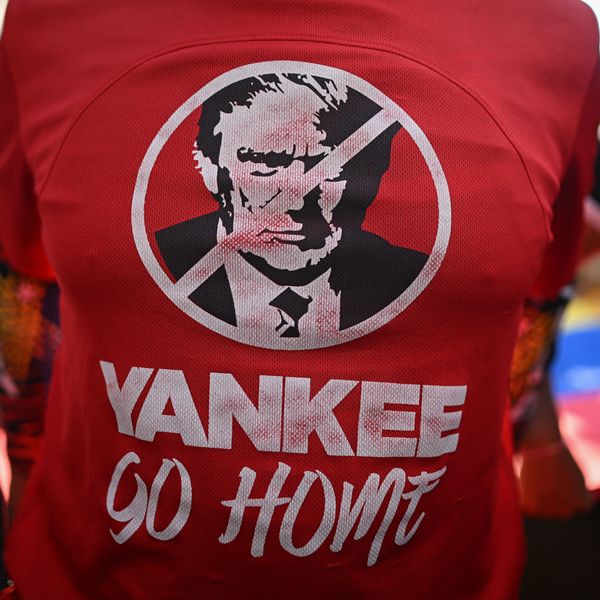Keyoko was there during the bombing of Hiroshima on Monday, August 6, 1945. At 8:15 a.m. just before the glass of her house shattered into tiny pieces, her baby started screaming. Shards of glass covered her scalp. Keyoko looked out the window and saw the mushroom cloud hanging in the air over the city. She went outside her house looking for relatives among the piles of bodies and animal carcasses killed by the intense, radioactive heat, she saw buildings and concrete streets with vaporized shadows of human figures etched on them. People were running around begging for water.
* * * * *
"Little Boy" had been dropped from the Enola Gay, the B-29 bomber that flew over Hiroshima. Upon impact, the bomb generated an enormous amount of air pressure and heat and a significant amount of radiation (gamma rays and neutrons). A strong wind generated by the bomb destroyed most of the houses and buildings within a 1.5-mile radius. When the wind reached the mountains, it ricocheted and again hit the people in the city center. By the end of the year 140,000 civilians were dead. Another 60,000 people eventually died from the bomb's effects. Three days later a second bomb, "Fat Man," was dropped on Nagasaki resulting in the deaths of approximately 70,000 people by year's end. On August 15, Japanese Emperor Hirohito surrendered.
* * * * *
Howard served in the Army during the Korean War. He is convinced that dropping the bomb on Hiroshima "was the right thing to do" because the war cost the lives of many Japanese and American GIs.
Today, Howard is concerned about North Korea's nuclear capability. "If we can't negotiate with them, they'll attack South Korea." He also recognizes that North Korea is more of a threat to the United States than the Arab countries. "I fear more for my family and not myself. I could cope, but I don't want something drastic to happen to them."
September 11 shocked Howard. Hearing about the lost lives made him very upset, especially since it happened on U.S. soil. Nevertheless, Howard is tired of hearing about 9/11 because he doesn't think it compares at all to the trauma the Japanese attack on Pearl Harbor caused.
"I lost a friend at Pearl Harbor and it still hurts," he says.
* * * * *
Sister Barbara taught English in Hiroshima 1974-1994. As a volunteer at the A-Bomb Hospital where the 1945 bomb victims were still being treated, she saw people who were still badly scarred and some who were blinded or made deaf.
"The hospital patients changed my whole attitude toward life," says Sister Barbara, who grew up during World War II and was "gung ho" to win it. "But I could see how war affected people's lives." Sister Barbara used to go to the Hiroshima Peace Museum every August even though it made her physically ill.
"It hurts you inside," says Sister Barbara. "You realize that people are human beings and that something terrible happened to them."
For Sister Barbara, the atomic bomb no longer means the end of a terrible war. Instead she understands that it has become a mechanism that allows one people to hold tremendous destructive power over another people.
"I've seen the results of atomic weapons," she says. "It's enough to make you ask: why did it have to happen?"
* * * * *
Every August 6 the city of Hiroshima holds memorial ceremonies to remember those who died from the bomb. Tens of thousands of people attend. The memorial ceremony begins with a march from the Peace Cathedral to the Cenotaph, the central monument of the whole complex and the site of the stone coffin that holds the Register of A-Bomb Victims. During the ceremony the name of each victim is read. At night the city holds a lantern float on the river and people buy candles for every family member lost to the bomb attack. Peacemakers all over the world have adopted the lantern float as a memorial of this day in their towns and cities. They insert prayers, thoughts and messages of peace in their lanterns.
* * * * *
The Peace Memorial Museum in Hiroshima provides a tangible record of the grim reality of that day and about the powerful impact that weapons of mass destruction can have on a city. The first half of the museum gives visitors a sense of life before the bombing; it showcases children's toys, books and magazines as well as a model of the city before the bombing. The second half of the museum holds shocking wax figures of the victims: their clothes burned right off of them, their skin hanging in strips like tattered rags, flesh burned raw and sometimes exposed down to the bone, eye sockets gouged out.
Many pregnant women delivered deformed babies and women who carried eight-week-old fetuses bore children with smaller heads and lower intelligence. Children were also muted, that is, their bodies stopped growing. As a result, many young women exposed to the radiation vowed never to marry or to have children because they feared what they might produce. The message of the museum is "Ban nuclear weapons and make peace in the world." Unfortunately, the world has not seen fit to heed this message. Here is an accounting of the nuclear weapons stockpiles in the world, according to the Natural Resources Defense Council (NRDC), and published in Bulletin of Atomic Scientists:
Country - (Number of Warheads) - Year of First Test
United States - (9,960 (5,735 active)) -1945
Russia - (16,000 (5,830 active)) -1949
United Kingdom - (200) - 1952
France - (350) - 1960
China - (130) - 1964
India - (70-120) - 1974
Pakistan - (30-52) - 1998
North Korea - (1-10) - 2006
Israel - (75-200) - undeclared


